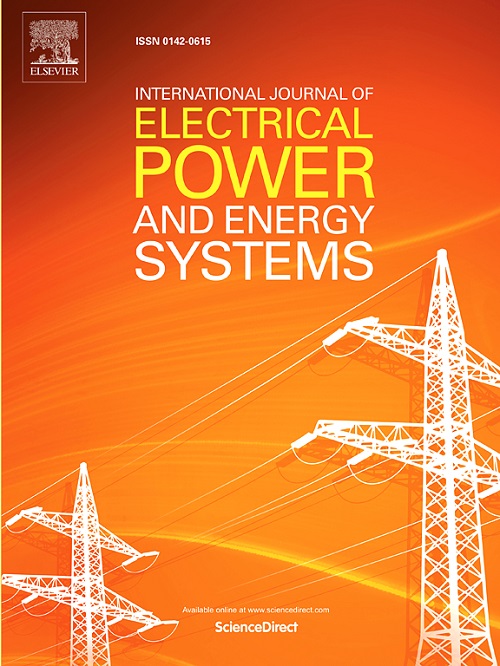Default detection in demand response based on block-sparse structure
IF 5
2区 工程技术
Q1 ENGINEERING, ELECTRICAL & ELECTRONIC
International Journal of Electrical Power & Energy Systems
Pub Date : 2024-11-01
DOI:10.1016/j.ijepes.2024.110304
引用次数: 0
Abstract
Demand response (DR) is the change in electric consumption by prompting consumers to change their normal consumption patterns in response to financial incentives. In various forms of DR, the contract-based DR is a framework to achieve a certain reduction by the contract with individual participants for their reduction. However, in practice, it is inevitable to encounter a default, implying that some of the participants fail contracted reduction owing to an unexpected event. This study develops a method to detect defaulting participants in contract-based DR. The method iterates two steps: estimating the most suspicious participant and inspecting its smart meter. By utilizing block-sparse structures in the detection problem, it can exactly determine the defaulting participants with a small number of inspections. The performance is evaluated by simulation, which indicates that our method has much higher performance than the conventional method in the sense that the number of inspections approximately 96.8% fewer than that of the conventional one.
基于块稀疏结构的需求响应违约检测
需求响应(DR)是指在经济激励措施的作用下,通过促使消费者改变其正常消费模式来改变电力消费。在各种形式的需求响应中,以合同为基础的需求响应是一种通过与个人参与者签订减少用电量的合同来实现一定减少的框架。然而,在实践中,不可避免地会遇到违约情况,这意味着部分参与者因意外事件而未能按合同减少用电量。本研究开发了一种方法来检测基于合同的 DR 中的违约参与者。该方法包含两个步骤:估计最可疑的参与者和检查其智能电表。通过在检测问题中利用块稀疏结构,该方法只需少量检测就能准确确定违约参与者。模拟评估表明,我们的方法比传统方法具有更高的性能,检查次数比传统方法少约 96.8%。
本文章由计算机程序翻译,如有差异,请以英文原文为准。
求助全文
约1分钟内获得全文
求助全文
来源期刊
CiteScore
12.10
自引率
17.30%
发文量
1022
审稿时长
51 days
期刊介绍:
The journal covers theoretical developments in electrical power and energy systems and their applications. The coverage embraces: generation and network planning; reliability; long and short term operation; expert systems; neural networks; object oriented systems; system control centres; database and information systems; stock and parameter estimation; system security and adequacy; network theory, modelling and computation; small and large system dynamics; dynamic model identification; on-line control including load and switching control; protection; distribution systems; energy economics; impact of non-conventional systems; and man-machine interfaces.
As well as original research papers, the journal publishes short contributions, book reviews and conference reports. All papers are peer-reviewed by at least two referees.

 求助内容:
求助内容: 应助结果提醒方式:
应助结果提醒方式:


